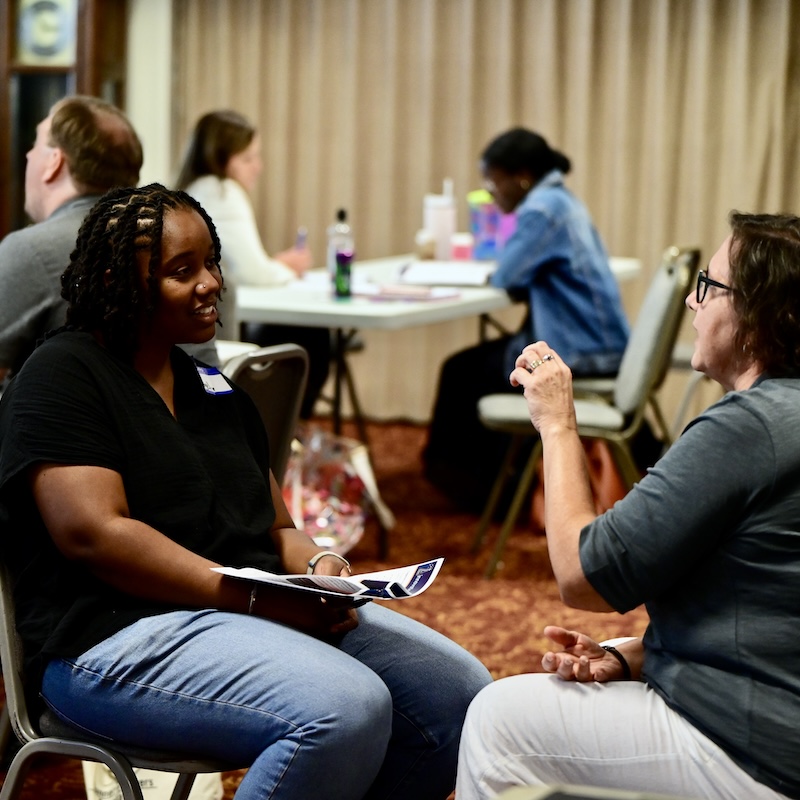
Allison Pugh, a sociologist at Johns Hopkins University, researches a concept she calls connective labor — the work of truly seeing and hearing another person. It’s the practice of being fully present to someone else, attending to their words, emotions, and humanity. And the impact, she says, is profound.
“The emotional impact of being seen—people feel like they have dignity, people feel like they have understanding, people feel like they have purpose,” Pugh shared in an episode of the podcast Hidden Brain.
“And when you’re not seen, it can really dissuade you from following good advice, because you don’t hear the good advice. You don’t think that it’s relevant to you, or it doesn’t feel like it recognizes the particularities of your situation.”
While Pugh’s research has implications for a wide range of professions, her insights are especially relevant for ministry leaders. At a time when loneliness, disconnection, and burnout are rising among both congregants and pastors, the capacity to be fully present may be one of the most essential practices in ministry today.
Senior ministry leaders juggle countless responsibilities during a week- worship service planning, sermon writing, pastoral care visits, developing discipleship opportunities, managing the faith community’s business, and overseeing teams. Amidst a full calendar, it’s tempting to overlook the role of seeing and hearing the people in your daily network. You might even think you don’t have time for it.
But what if connective labor—the ministry of noticing, listening, and being with others—isn’t just nice to do when there’s extra time? What if it’s the most important work a leader does all week?
Pugh’s research challenges leaders to reframe their assumptions. Slowing down, looking into someone’s eyes, and truly listening isn’t just a caring gesture—it’s a transformational one. When people feel seen, they experience dignity, belonging, and a deeper capacity to grow.
For the Church, this raises an urgent question:
Are we creating enough opportunities for people to feel seen, heard, and beloved—not just during Sunday worship, but throughout the week, in the spaces where life really happens?
Local coffee shops, neighborhood sidewalks, staff meetings, and hospital rooms are sacred spaces where connective labor takes root. While ministry programs matter, they are not a substitute for the incarnational presence modeled by Jesus.
This isn’t a new question for people of faith. Afterall, we follow in the footsteps of a savior who was the premier practitioner of connective labor (see John 4:1-30 for just one example).
But the trappings of modern ministry in North America, marked often by busyness and disconnection, sometimes get in the way of the actual ministry modeled by Jesus.
Immanuel, God with us. We follow a God who labored to be connected to us. That profoundly simple truth should drive everything about how we approach ministry.
Pugh shares that in medical studies, when patients feel seen and heard by their doctors, the positive health outcomes exceed the benefits of taking a daily aspirin to prevent heart attacks.
What might be the spiritual, emotional, and communal outcomes when people in your congregation feel genuinely seen by their leaders?
Applied to a ministry setting, what might be the transformational well-being outcomes for a person who feels truly seen by a pastor?
Take a moment to reflect:
In a culture filled with noise and distraction, your presence might be the most faithful act of leadership you offer this week. As you consider all that needs to get done, remember: ministry doesn’t begin after the to-do list is finished—it happens in the noticing, the listening, and the connecting.
Ready to make space for what matters most? Set up a free consultation to explore how practicing connective labor can deepen relationships and strengthen your ministry.
About the Author— Meghan Hatcher is the Senior Director of Ministry Strategies at the Ministry Leadership Center. She has served diverse faith communities through pastoral leadership, youth ministry, new church development, community engagement, and ministry innovation. Meghan has a Bachelor of Journalism, a Master of Science in Sustainable Development and Applied Sociology, and a Master of Divinity.



Subscribe to receive a monthly roundup of fresh insights and free tools for senior ministry leaders.